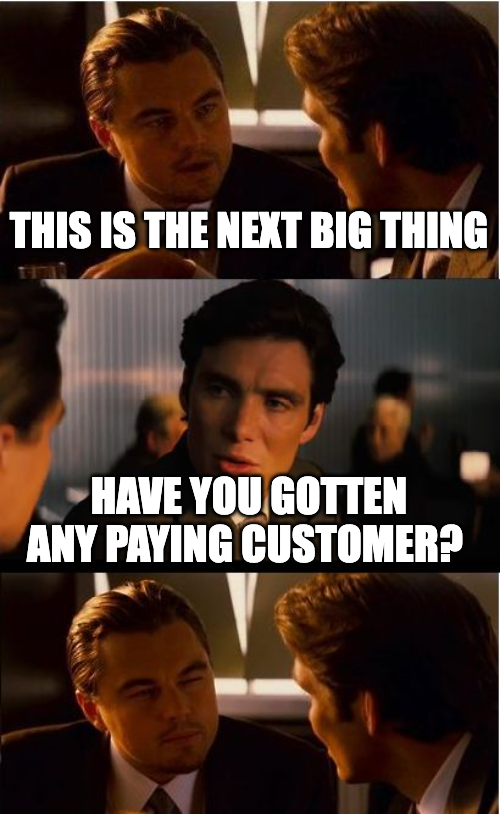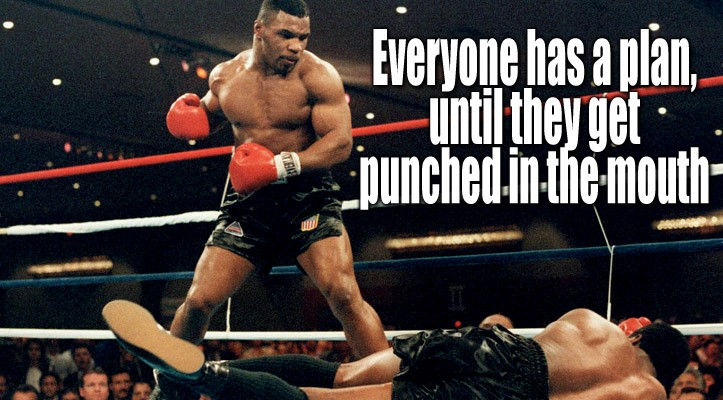Startup Log: Day 100
About 100 days have passed since the last retrospective. I wanted to write this after 90 days, but with each day being so hectic, it’s been difficult to even keep records. Rize broke through the 80-hour workweek. However, we are not making progress. Can there only be good days? We are working like dogs, but it seems like it’s time to question if we are doing it well.
Partners
We have three new partners on our team. I am truly grateful that they believed in our team when we had nothing. I asked several people around me for reference checks, and I put a lot of thought into who would know me best before reaching out. I asked people who had formed a team with me but it didn’t work out, people I had co-founded a business with in the past, and people I had worked with as a developer. I believe we have these partners now because there were at least some good things said about me. I had a great time catching up with the CEO, friends, and colleagues from my past startup.
When I first started the business, I had the idea that we absolutely had to find something like PMF (Product-Market Fit) and then get investment, but that didn’t happen, which feels a bit strange. It adds a bit more anxiety. I feel a greater sense of responsibility, especially because I believe this relationship was formed based on their faith in ‘who we are’ rather than ‘what we do’.

Going to the US
Like naive youngest children, we have been saying that we will target the global market and work in the US. When we said this in Korea, the most common question we got was, ‘What are you going to do in the US?’ We discussed this internally often, questioning, ‘Is there a real reason we have to go to the US?’ I was particularly worried, thinking, ‘What is the absolute reason we have to go to the US?’, ‘Do we have to go and spend more money?’ In fact, our customers are not only in the US, and we were meeting almost all of them via Google Meet, so there was no absolute necessity to be in the US. But as luck would have it, one of our partner teams could provide us with residency support in the US, so for us, who had no salaries, it became a situation where ‘we could work in the US for about the cost of an office.’

Although we received help, it was not confirmed, so we failed to get the residency support. There was a meeting where we had to explain why we needed US residency support, and I think our ‘absolute reason for going’ was not as convincing as other teams’.
Of course, we could have appealed more that we were the team that really needed it, but I don’t think we are the kind of people who are good at making something sound plausible when we don’t even believe it ourselves internally.
When we were dreaming of getting the support, we thought we would gain a definite advantage, but after failing to get it, our mindset shifted to thinking that we really had to do well. My co-founder also had such concerns, but he said,
- If we really want to do a global business well, it makes sense to do it in the place with the highest density of talent and where the most global businesses are created.
- If we were Americans, it would be so natural to start a business there, so we probably don’t need to find a reason why we must do it in the US.
We talked a lot with other startup teams who went to SF with the attitude of ‘let’s just go and do something,’ and they also said, ‘There were many things to learn that are hard to explain in words, and if we went back to that time, we would make the same choice.’ They said you could see an infinite number of people involved in startups, and there were so many random opportunities. Sometimes when I brought this up, some senior entrepreneurs would look at me with an expression of ‘you naive kids…’ and give sincere advice. However, I think we moved forward with the expectation of exploring the secrets that statistics hold and the random opportunities. It has now been about 16 days since we arrived in the US.
What Happened Before Going to the US
The way we find our item has been constantly changing before April, from April to July, and now. The story I’m about to write has changed a bit from my current thinking, but I’ve tried to record it as I thought at the time as much as possible.
Creating 2D Animation
Creating 2D animations from a novelist’s work faced several difficulties. The novelists were satisfied that visual content was being created without any special effort on their part, but the viewers were not. Some fans of the novels definitely watched the work with the attitude of ‘Wow, my favorite novel has become an animation!’ However, creating something that would also interest the general public was a problem beyond technology.
Our team lacked what it took to produce good quality. We were people who enjoyed a lot of content, but we had no experience creating it. We had a sense of ‘this scene is awkward,’ but we had a very poor sense of how to make good content. Converting a novel into a visual-centric content was difficult beyond just generating a video. We came to think of this as the realm of directing. We saw that existing AI animation creators could also create good quality videos, but the reason they couldn’t create continuous works like webtoon artists or novelists was because they still lacked the ability to create stories or direct them.
Since the currently active AI animation creators are mostly hobbyist creators in a tech-friendly environment like us, they lacked experience in creating such stories. It’s like the very, very early days of webtoon artists where the directing, writing, and drawing parts were separated.
So we outsourced one director to re-direct an existing work. When we outsourced to a junior-level animation director, the quality was definitely better than ours, but it was hard to say it was a definite improvement. Our next concern was divided into two paths.
- Entrust part of the content production process to experts and gradually reduce costs through automation: The field of video production can still be produced more cost-effectively and quickly than the existing industry because it is still produced by AI. It would be like Reelshort for Animation. But there are too few opportunities to experiment. Roughly calculated, we would fail if we couldn’t get results within 10 works.
- Provide a tool for creating low-quality, low-engagement content to everyone and gradually improve the quality: Take the existing internal tool, refine it to be a bit easier to use, and let users act as prosumers. Gradually increase the quality to a reasonable level of animation content. But I don’t know who would use it.
We judged that our chances of success with the first option were very low. We thought we were better at refining software, and after a long period of discussion and deliberation, we decided to go with the second direction.
Lovable for Video Creation
We created a video content generation agent that follows the workflow of the tools we used internally. It was a product that handled workflows that couldn’t be solved with a simple video model alone, such as adding BGM for video creation, continuously producing consistent videos, and creating videos with the same voice. We didn’t want to be building this in the US, so we quickly made it in two weeks and started looking for customers. Within the team, we thought that the value we provide is somewhat ambiguous with just verbal explanations, so we thought that users would feel the value only if we showed them something that works. Of course, the version we whipped up was full of bugs and had technical issues due to the long video creation process, making it difficult to onboard users, but we thought we could at least convey the feeling. However, customers did not feel the value without seeing the result, and it seems we spent about a week fixing bugs even after coming to the US.
I have a long-standing question about the underlined part. Is it really so?
Our first target customers were content creators on X. Their main activity is to try out content generation AI products and post content like “It’s cooking” or “It’s over.” They were people who created many small examples and sold affiliates, lectures, etc., to their subscribers. These people only needed to post short examples and were not creating videos with a specific purpose, so our tool was essentially just a product below Veo3 and had no utility. It was not a very “cooking” product.
The next target customers we met were people who created low-engagement AI content on Tiktok. We thought these people would be a good fit for our requirements, but they felt uncomfortable that our tool took away the controller of their existing workflow, resulting in videos of a different quality than the ones they were making. They seemed to have a good reaction to the part where you could just say anything and it would be made well, but the quality of the videos they were making now didn’t require a very consistent voice for every video or a very elaborate series. It was enough to have a Bigfoot saying funny lines, so the value we provided was less than what they could get from just whipping something up with Veo3.
3D AI Companion
While we were contemplating our next customer segment, we briefly delved into 3D AI Companion at the strong suggestion of my co-founder. It was so sudden, but Ani had made Grok the number one app in Japan, and he thought that the virality of 3D Companion was so high that a service that could quickly ride the wave would emerge. The idea was that while characters in current 3D Companion apps are not customizable, we could create a service where anyone can create their desired character and use it as a companion. So, we spent about 3.5 days in crunch mode exploring the quality of the flow of creating a 3D model from an image, rigging it, and animating it.

The result was a very disappointing quality. We thought that the visual aspect was the core of a 3D Companion service and that we couldn’t provide value at this level. So, we returned to the point where we had failed to find customers for Lovable for Video Creation.
Work and Thoughts So Far
From April until now, we have focused on ‘what we can do for a long time’ and ‘the field we are interested in.’ Rather than asking ‘what is the problem?’, we have mainly focused on what kind of future we envision and how we can create it. So, we have been creating a general product, looking for people, trying a different approach if it doesn’t work, failing, and repeating this process.
There is a problem with this method: it is very difficult to find an entry point by creating a non-specific product and then finding people who feel even a little bit of value in it to make it more specific. This approach seems to be taken especially when approaching B2C.
Internally, we are considering exploring various items with a more open mind, but returning to the method we used from January to March, where the customer is clearly defined. We have decided to meet more people in SF for a while and get new input to look for various problems.
Startup Log: Day 100
